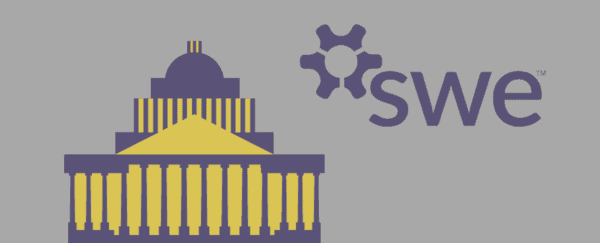Since Title IX was passed, girls and women have experienced tremendous progress in educational programs and activities. Regardless, gender bias is still present within institutional practices, especially for girls and women in federally-funded STEM (science, technology, engineering, and mathematics) programs.
-
What is Title IX?
Title IX of the Education Amendments of 1972 prohibits discrimination based on gender by an educational program that receives federal funding.
-
Does Title IX only apply to athletic programs?
No. Since Title IX is most visible in women’s participation in collegiate athletics, many believe that Title IX applies only to athletic programs. But athletics is only one of 10 key areas addressed by the law, which also applies to: Access to Higher Education, Career Education, Education for Pregnant and Parenting Students, Employment, Learning Environment, Math and Science, Sexual Harassment, Standardized Testing and Technology.
-
How has Title IX supported the advancement of women?
Title IX has led to an incense of women in NCAA athletic programs. Due to litigation in the 1970s to force compliance with Title IX by educational institutions, many athletic programs were expanded to include women. According to the most recent numbers, the NCAA reports that 43% of athletes are women. If this form of compliance was implemented in federally funded STEM programs, the impact for women and girls would be tremendous.
-
Why is Title IX important for women in STEM?
Title IX is vital for women’s advancement in STEM fields. The full enforcement of Title IX in STEM education programs and institutions across the United States will support the advancement of women and girls. As the following sections demonstrate, the implementation of Title IX in STEM programs is uneven and more accountability is needed to ensure federally funded programs are not discriminating based on gender.
-
Do educational institutions fall short of implementing Title IX in STEM programs?
It is hard to know the answer to this question when many institutions do not widely share their implementation practices. In 2015, the U.S. Government Accountability Office (GAO) published a report on diversity for women in science and the need to fully implement Title IX. This report stated very clearly that not all federal funding agencies that grant the most money to STEM research in higher education have not engaged in any comprehensive monitoring and enforcement activities to ensure that grant recipients do not discriminate on the basis of gender. This report specifically called out the Department of Defense and Health and Human Services as agencies that needed to conduct Title IX compliance reviews.
-
How can educational institutions improve their implementation of Title IX for their STEM programs?
While many educational institutions do sign statements that say they are in Title IX compliance, they may not designate a point of contact for Title IX compliance, establish or publish a grievance procedure for Title IX, or share information about their policies in relation to Title IX. All of these things are necessary to ensure those who are intended to benefit from Title IX are able to utilize the law to their advantage.
Previously, the U.S. GAO identified four ways that federally funded agencies and institutions could to promote compliance with Title IX to address the need for gender diversity in STEM fields. These are explained at length by the U.S. Department of Education and summarized here:
- Give assurances to federal granting agencies that programs and activities comply with Title IX
- Designate at least one employee to coordinate Title IX compliance efforts
- Establish a Title IX grievance procedure
- Disseminate information about Title IX nondiscrimination policy.
The GAO has continuously emphasized that most federally funded bodies adhere to the first requirement on the list but that many are noncompliant with the other recommendations.
-
Why should I pay attention to my institution’s compliance with Title IX?
Learning about Title IX is the first step to holding institutions accountable to this federal law. The GAO report concluded that faculty and students often do not file complaints because they are unaware of the law and their right to file a complaint for noncompliance.
Once you know about Title IX, you are more likely to be able to advocate for yourself or someone you know who may be experiencing discrimination based on gender. Both students and employees at federally funded schools, colleges, and universities should be aware that Title IX prevents discrimination based on gender.
For example, in the K-12 environment, parents need to know that certain practices might unfairly discriminate against their daughters. An honors math or physics class full of boys does not, by itself, violate Title IX. But if that condition occurs because the teacher in charge of the class actively discourages girls from participating, or because counselors routinely steer girls away from such demanding courses, it is more than prejudice – it is discrimination.
-
How does SWE advocate for the implementation of Title IX?
To remain competitive in a global economy, the U.S. must develop its technological literacy, talent, and expertise across all sectors of society. Through its annual Congressional outreach events and ongoing advocacy, SWE recommends the following ways improve the climate for women in STEM disciplines through the application of Title IX:
- Policymakers should step up enforcement of Title IX with regard to STEM disciplines, and fund programs that will help educate students and their parents, and STEM faculty, of their rights under the law.
- Educational institutions should fulfill their obligations under the law; examine their institutional policies, procedures or practices for gender bias; provide suggestions for areas to examine when evaluating programs for gender bias; and make this information accessible to the public.
- Federal funding agencies should fulfill their monitoring and enforcement obligations under the law, and make this information available to the public.
-
Where can I go to learn more?
In 2006, SWE published a General Position Statement on the Application of Title IX to the Science, Technology, Engineering, and Mathematics (STEM) Fields. Research and data for this Q&A document was pulled from this resource in addition to the primary sources linked above. If you are curious about learning more, check out this General Positon Statement and the linked primary source documents throughout this post.
Author
-
![9 Questions and Answers About Title IX All Engineers Should Know [] SWE Blog](https://alltogether.swe.org/wp-content/uploads/2021/10/swe-favicon.png)
SWE Blog provides up-to-date information and news about the Society and how our members are making a difference every day. You’ll find stories about SWE members, engineering, technology, and other STEM-related topics.






